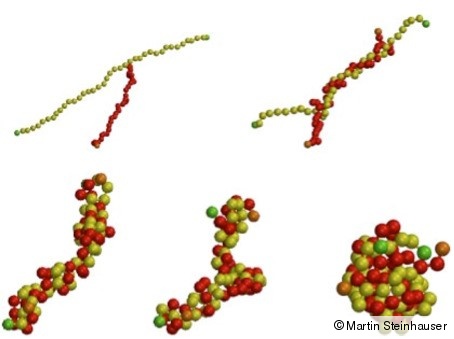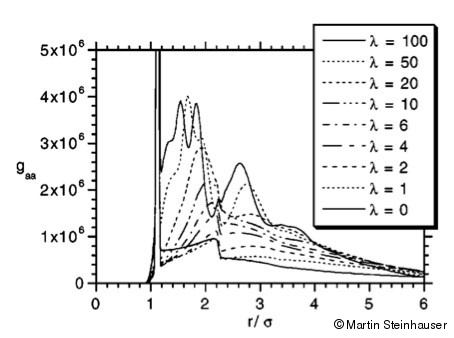Polyelectrolytes (see top figure) play a major role in everyday life, particularly in biological systems. However, despite their importance, polyelectrolytes are not as well understood as uncharged polymer systems. For example, at present there is no satisfactory theory for these charged systems at very low salt concentrations. The long-range Coulomb interaction introduces a new length scale in the system and renders analytical calculations very difficult. On the experimental side various investigations of polyelectrolytes have been done, but they are obviously difficult to perform.
Computer simulations are therefore an important tool for the detailed investigation of these systems on a molecular level. So far, mostly chains with added counterions and colloidal systems have been studied. In our study, we performed a systematic analysis of systems consisting only of two polymer chains. In solutions of oppositely charged polyions, the strong Coulomb attraction leads to the formation of complexes. Such complexes are relevant for a variety of technical applications and are fundamental in biological systems. Of particular interest is the application of complexes of DNA and oppositely charged macromolecules in gene therapy. The problem here is to introduce genetic material into cell nuclei through the plasma membrane. Experiments on DNA complexes indicate conformational changes of the DNA molecule during the complex formation. In our simulations, we see similar behavior of the charged polymer chains (see bottom figure).
Selected publications
Complex Formation in Systems of Oppositely Charged Polyelectrolytes: A Molecular Dynamics Simulation Study
R.G. Winkler, M.O. Steinhauser, P. Reineker
Phys. Rev. E 2002, 66, 021802



